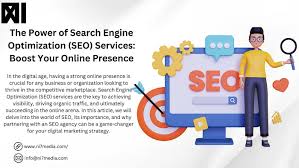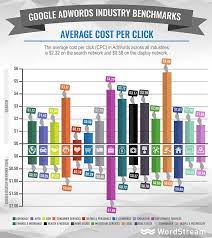Online Advertising Prices: Understanding the Costs of Digital Marketing
In today’s digital age, online advertising has become an essential component of any successful marketing strategy. With the ability to reach a vast audience and target specific demographics, businesses of all sizes are leveraging the power of digital platforms to promote their products and services. However, one crucial aspect that often raises questions is online advertising prices. Understanding the costs associated with digital marketing can help businesses make informed decisions and maximize their return on investment.
First and foremost, it’s important to note that online advertising prices can vary significantly depending on various factors. These factors include the platform chosen, the type of ad campaign, target audience, ad format, duration of the campaign, and geographical location. Each platform offers different pricing models such as cost-per-click (CPC), cost-per-mille (CPM), cost-per-action (CPA), or fixed-rate pricing.
One popular platform for online advertising is Google Ads. With its vast reach and targeting capabilities, businesses can display ads across Google’s search results pages, websites within its display network, or even on YouTube videos. Google Ads operates on a pay-per-click (PPC) model where advertisers only pay when someone clicks on their ads. The cost per click can range from a few cents to several pounds depending on factors like keyword competitiveness and quality score.
Social media platforms like Facebook, Instagram, Twitter, and LinkedIn also offer advertising opportunities with their own pricing structures. Facebook Ads, for example, allows advertisers to set a budget for their campaigns while choosing between CPC or CPM bidding options. The costs can vary based on factors such as audience targeting parameters and competition within your industry.
Another consideration when it comes to online advertising prices is the ad format itself. Display ads typically have different price points compared to video ads or sponsored content placements. Video ads tend to be more expensive due to higher production costs and increased engagement potential.
Furthermore, understanding your target audience and their online behavior is crucial in determining the effectiveness of your advertising campaigns. Reaching a highly targeted audience can be more cost-effective than casting a wide net to a general audience. By utilizing data-driven targeting options, businesses can optimize their ad spend and increase the chances of conversions.
It’s worth mentioning that while online advertising prices can seem daunting, they often provide a higher return on investment compared to traditional advertising methods. Digital marketing allows for precise tracking and measurement of campaign performance, ensuring that businesses can make data-driven decisions to optimize their strategies.
To navigate the world of online advertising prices effectively, it is recommended to work with experienced digital marketing professionals or agencies. They possess the knowledge and expertise to guide businesses through the process, helping them allocate their budgets wisely and achieve their marketing goals.
In conclusion, online advertising prices vary depending on several factors such as platform choice, ad format, target audience, and geographical location. Understanding these costs is essential for businesses looking to maximize their return on investment in digital marketing. By leveraging data-driven targeting options and working with industry professionals, businesses can make informed decisions that will drive successful online advertising campaigns.
Commonly Asked Questions: Understanding Online Advertising Prices in the UK
- What is advertising pricing?
- How much should you charge for advertising?
- Is advertising online cheaper?
- Is online advertising cheaper?
- How much does a YouTube ad cost per 1,000 impressions?
- How much is a 30-second commercial ad?
- What is a good cost per 1000 impressions?
- Is it cheaper to advertise online?
What is advertising pricing?
Advertising pricing refers to the cost associated with running an advertising campaign or placing ads on various platforms or media channels. It involves determining the financial investment required to reach a target audience and promote products or services effectively. Advertising pricing can vary depending on several factors, including the platform chosen, ad format, target audience, duration of the campaign, geographical location, and competition within the industry.
Different pricing models are used in advertising. Some common pricing models include:
- Cost-Per-Click (CPC): Advertisers pay a specific amount each time a user clicks on their ad. This model is commonly used in search engine advertising and pay-per-click (PPC) campaigns.
- Cost-Per-Mille (CPM): Advertisers pay for every thousand impressions of their ad. This model is often used in display advertising where the goal is to increase brand visibility.
- Cost-Per-Action (CPA): Advertisers pay only when a specific action is taken by users after seeing an ad, such as making a purchase or filling out a form.
- Fixed-Rate Pricing: Advertisers negotiate a fixed price with publishers or media channels for displaying their ads over a specific period.
The actual pricing depends on factors such as the popularity and reach of the platform, targeting capabilities, audience demographics, ad placement position, ad format complexity, and demand from other advertisers competing for the same audience.
It’s important for businesses to consider their budget and goals when determining advertising pricing. Finding the right balance between cost and return on investment (ROI) is crucial to ensure effective marketing campaigns that generate desired outcomes such as increased brand awareness, website traffic, leads, or sales.
Working with experienced marketing professionals or agencies can help businesses navigate advertising pricing effectively by optimizing budgets and selecting the most suitable platforms and strategies to achieve their objectives while maximizing ROI.
How much should you charge for advertising?
Determining the appropriate pricing for advertising can be a complex task, as it depends on various factors such as the platform, target audience, ad format, campaign duration, and industry competition. Here are some considerations to help you determine how much to charge for advertising:
- Research your market: Start by researching your industry and competitors to get an idea of the prevailing advertising rates. Look at similar businesses or publications targeting a similar audience to understand their pricing structure.
- Understand your value proposition: Consider the unique value that your advertising offers. If you have a highly engaged audience or offer specialized targeting options, you may be able to command higher rates.
- Define your pricing model: Determine whether you will use cost-per-click (CPC), cost-per-mille (CPM), cost-per-action (CPA), or fixed-rate pricing models. Each has its own advantages and considerations. For example, CPC charges advertisers per click received, while CPM charges per thousand impressions.
- Consider production costs: Take into account any production costs associated with creating the advertisement. If you are providing additional services like ad design or content creation, factor those costs into your pricing.
- Evaluate campaign duration: Longer campaigns may warrant discounted rates compared to shorter ones since advertisers are committing to a more extended period of exposure.
- Assess target audience reach: The size and quality of your target audience play a role in determining pricing. A highly targeted and engaged audience may justify higher rates due to increased chances of conversions.
- Monitor industry trends: Stay updated on industry trends and changes in demand for advertising services. Adjust your prices accordingly to remain competitive in the market.
- Offer packages or bundles: Consider offering different advertising packages or bundling options that cater to different budget levels and objectives. This provides flexibility for advertisers and can help attract a wider range of clients.
- Provide value-added services: To differentiate yourself from competitors, consider offering additional services like performance tracking, analytics reporting, or audience insights. These value-added services can justify higher pricing.
- Test and iterate: As you gain experience and feedback from clients, continuously evaluate and refine your pricing strategy. Monitor the results of your campaigns and adjust your rates accordingly to ensure a fair balance between value provided and costs incurred.
Remember, finding the right pricing for advertising involves a balance between attracting advertisers while ensuring profitability for your business. Regularly assess market conditions, industry standards, and client feedback to adapt your pricing strategy over time.
Is advertising online cheaper?
Advertising online can often be more cost-effective compared to traditional advertising methods. There are several reasons why online advertising tends to be cheaper:
- Targeted Audience: Online platforms offer advanced targeting options that allow businesses to reach specific demographics, interests, and behaviors. By narrowing down the audience, businesses can maximize their ad spend by focusing on those most likely to be interested in their products or services.
- Flexibility in Budgeting: Online advertising platforms typically offer flexible budgeting options, allowing businesses to set their own spending limits and adjust them as needed. This level of control enables businesses to allocate their budgets more efficiently and optimize their campaigns based on performance.
- Pay-per-Click (PPC) Model: Many online advertising platforms operate on a pay-per-click model, where advertisers only pay when someone clicks on their ads. This means that businesses are only charged for actual engagement with their ads, ensuring that they receive value for their money.
- Real-Time Tracking and Optimization: Online advertising provides real-time tracking and analytics, allowing businesses to monitor the performance of their campaigns instantly. By analyzing data such as impressions, click-through rates, and conversions, businesses can make data-driven decisions and optimize their campaigns accordingly.
- Cost Transparency: Online advertising platforms often provide transparency in terms of costs by offering detailed reporting and insights into campaign performance. This allows businesses to assess the effectiveness of their ad spend and make adjustments as needed.
However, it’s important to note that while online advertising can be cost-effective, the actual costs will vary depending on various factors such as the platform chosen, competition within your industry, ad format, target audience size, and campaign objectives. It’s recommended for businesses to carefully plan their online advertising strategies and work with experienced professionals or agencies who can help optimize budgets and achieve desired results within a given budget.
Is online advertising cheaper?
When comparing online advertising to traditional advertising methods, it is generally considered that online advertising can be more cost-effective. Here are a few reasons why:
- Targeted Audience: Online advertising allows businesses to target specific demographics, interests, and behaviors of their audience. This targeted approach ensures that the ads reach individuals who are more likely to be interested in the product or service being advertised. By reaching a relevant audience, businesses can maximize their ad spend and achieve higher conversion rates.
- Flexible Budgeting: Online advertising platforms often offer flexible budgeting options, allowing businesses to set daily or campaign budgets according to their financial capabilities. This flexibility enables businesses to start with smaller budgets and scale up as they see positive results.
- Pay-per-Click (PPC) Model: Many online advertising platforms operate on a pay-per-click (PPC) model, where advertisers only pay when someone clicks on their ads. This ensures that businesses only incur costs when there is active engagement with their advertisements. Compared to traditional forms of advertising where costs are incurred regardless of response or engagement, PPC models can be more cost-effective.
- Real-Time Performance Tracking: Digital marketing provides the ability to track and measure campaign performance in real-time. Businesses can monitor key metrics such as impressions, clicks, conversions, and return on investment (ROI). This data-driven approach allows for optimization and adjustment of campaigns based on performance, ensuring that ad spend is allocated effectively.
- Lower Production Costs: Creating digital advertisements often requires lower production costs compared to traditional media such as TV commercials or print ads. With advancements in technology and the availability of user-friendly design tools, businesses can create visually appealing ads at a fraction of the cost associated with traditional media production.
While online advertising can generally be more cost-effective than traditional methods, it’s important to note that costs can vary depending on factors such as platform choice, competition within your industry, ad format complexity, and target audience size. It is advisable for businesses to conduct thorough research, set clear objectives, and work with digital marketing professionals to optimize their ad spend and achieve the best results within their budget constraints.
How much does a YouTube ad cost per 1,000 impressions?
The cost of YouTube ads per 1,000 impressions, also known as cost per mille (CPM), can vary based on several factors. These factors include the target audience, ad format, competition, and the bidding strategy chosen by advertisers.
On average, YouTube CPM rates range from $2 to $
However, it’s important to note that this is a general estimate and can vary significantly depending on the specific circumstances of each advertising campaign.
Factors that can influence YouTube ad CPM rates include:
Targeting: The more specific and niche your target audience is, the higher the CPM may be. Advertisers often pay more to reach a highly targeted audience.
Ad format: Different ad formats have varying CPM rates. For example, skippable video ads (TrueView ads) typically have lower CPMs than non-skippable ads or masthead ads.
Competition: If there is high demand for ad placements in a particular industry or during peak advertising periods, it can drive up the CPM rates due to increased competition among advertisers.
Bidding strategy: Advertisers can choose between different bidding strategies such as target CPM (tCPM) or maximum CPV (cost per view). The bidding strategy selected can impact the overall CPM costs.
It’s important for businesses considering YouTube advertising to keep these factors in mind when planning their budgets and setting expectations for their campaigns. Working with digital marketing professionals or agencies experienced in YouTube advertising can provide valuable insights and help optimize your ad spend for maximum results.
How much is a 30-second commercial ad?
The cost of a 30-second commercial ad can vary significantly depending on several factors. These factors include the television network or channel on which the ad will air, the time slot, the program’s popularity, the target audience, and the duration of the advertising campaign.
For example, airing a 30-second commercial during prime time on a popular national television network can be considerably more expensive compared to airing it during non-peak hours or on local channels. The cost can also increase during special events or highly-watched programs.
Additionally, different networks and channels have their own pricing structures based on their viewership and reach. Some networks offer package deals that include multiple airings of commercials over a specific period.
To provide a specific cost for a 30-second commercial ad would require more information about the specific network, program, and target audience. It’s advisable to reach out to advertising agencies or media buying professionals who can provide accurate pricing estimates based on your specific requirements and goals.
What is a good cost per 1000 impressions?
The ideal cost per 1000 impressions (CPM) can vary depending on several factors, including the industry, target audience, advertising goals, and the platform being used. However, as a general guideline, a good CPM typically falls within the range of $1 to $10.
It’s important to note that CPM rates can vary significantly across different advertising platforms. For instance, social media platforms like Facebook or Instagram tend to have higher CPM rates due to their extensive user base and advanced targeting capabilities. On the other hand, display ad networks or programmatic advertising platforms may offer lower CPM rates.
To determine what constitutes a good CPM for your specific campaign, it’s crucial to consider your overall marketing objectives and compare the costs against the expected return on investment (ROI). If your campaign is generating a high click-through rate (CTR) or driving conversions at an acceptable cost per acquisition (CPA), then a slightly higher CPM may still be considered reasonable.
Furthermore, it’s essential to monitor industry benchmarks and compare your CPM rates against competitors or similar campaigns within your niche. This can provide valuable insights into whether your costs are in line with market standards or if adjustments need to be made.
Ultimately, finding a good CPM requires striking a balance between budget constraints and desired results. It’s advisable to continuously evaluate campaign performance, make data-driven optimizations, and test different strategies to achieve the most effective and efficient advertising outcomes.
Is it cheaper to advertise online?
In general, online advertising can be more cost-effective compared to traditional advertising methods. There are several reasons why online advertising tends to be cheaper:
- Targeted Audience: Online platforms offer advanced targeting options that allow businesses to reach specific demographics, interests, and behaviors. By delivering ads to a highly relevant audience, businesses can maximize their ad spend and increase the chances of conversions. This targeted approach reduces wasted impressions and helps optimize costs.
- Flexible Budgeting: Online advertising platforms often provide flexibility in budgeting options. Advertisers can set daily or campaign budgets according to their financial capabilities. This allows businesses with smaller budgets to still participate in digital marketing and compete with larger brands.
- Pay-Per-Click (PPC) Model: Many online advertising platforms operate on a pay-per-click model, where advertisers only pay when someone clicks on their ads. This means that businesses are only charged for actual engagement with their ads, making it more cost-effective compared to paying for impressions that may not result in any action.
- Real-Time Optimization: Online advertising provides real-time data on campaign performance, allowing businesses to track the effectiveness of their ads and make adjustments accordingly. By monitoring key metrics like click-through rates (CTR) and conversion rates, advertisers can optimize their campaigns in real-time, ensuring that they are getting the most value for their money.
- Competitive Pricing: The digital advertising landscape is highly competitive, with numerous platforms vying for advertisers’ attention. This competition often leads to competitive pricing structures as platforms strive to attract businesses by offering affordable rates.
However, it’s important to note that the cost of online advertising can still vary depending on factors such as platform choice, ad format, target audience competitiveness, and industry competition. While online advertising generally offers cost advantages over traditional methods, it is crucial for businesses to carefully plan and strategize their campaigns to achieve optimal results within their budget constraints.
Ultimately, by leveraging the targeting capabilities, flexibility, and real-time optimization options of online advertising, businesses can often achieve a higher return on investment compared to traditional advertising methods.




